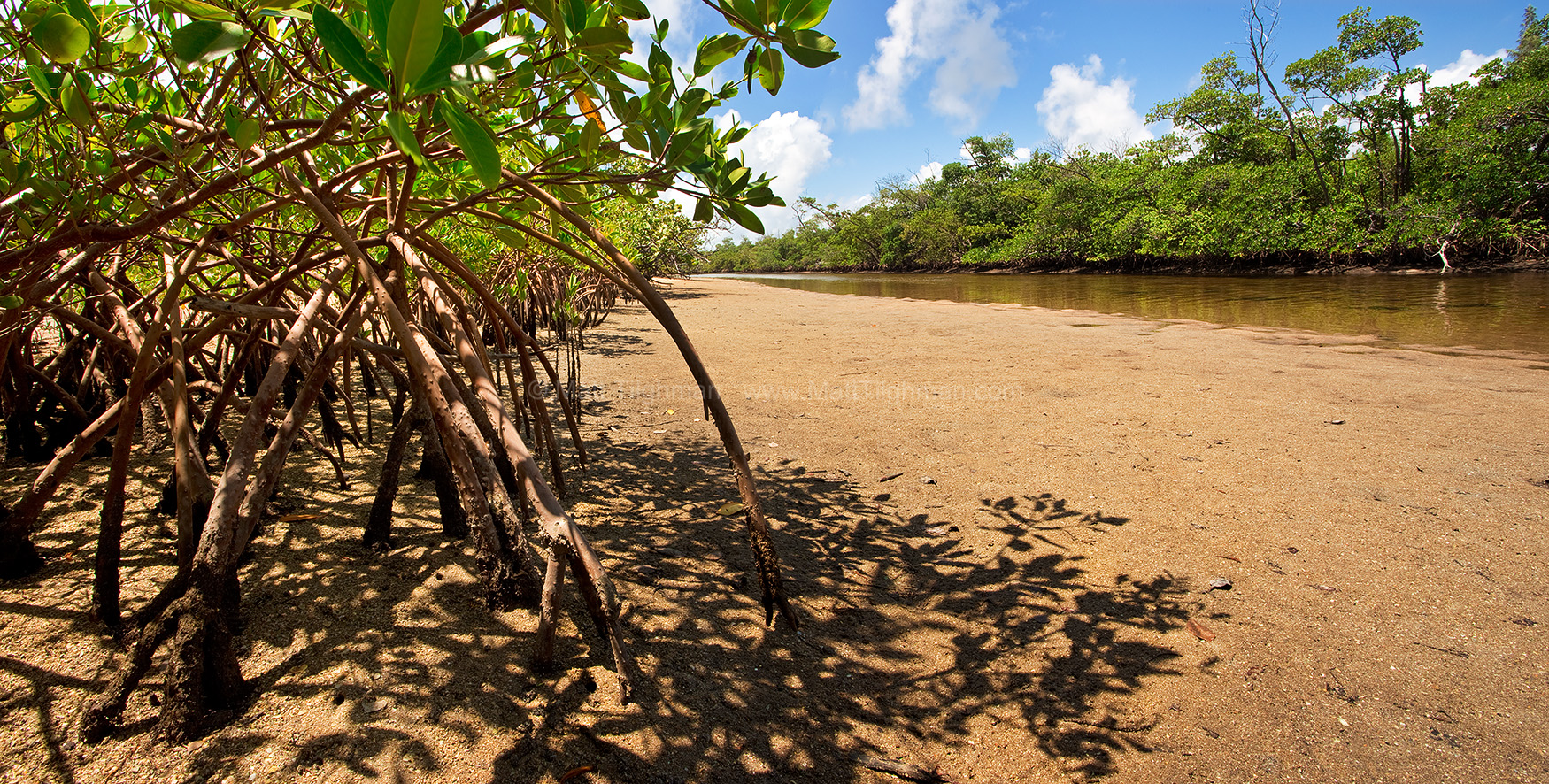Putting Down Roots – Mangrove Coast In South Florida
The mangrove roots in this tidal estuary in South Florida's Von D. Mizell-Eula Johnson State Park provide important refuge for young animals that need protection.
In the ocean, a great many animals do not care for their young, but rather lay many eggs so that some make it to adulthood. For these newborns on their own, finding a safe place to hide can be the difference between life and death. Unfortunately, there's not many places to hide in the vast and empty sea. But there's a few. Coral reefs are one, with all their rocks and holes. The mangrove coast is another (pictured here at low tide, but usually the roots are underwater). Big predators have trouble navigating the mess of roots, so smaller animals are safe if they stay within. There's not all that many mangroves in the world, being limited mainly to between the latitudes of 25N and 25S. (Although the ones pictured here, in Broward County's Von D. Mizell-Eula Johnson State Park, are at 26N). Despite being at great risk, coral reefs cover about 110,000 square miles worldwide. Mangrove forests, on the other hand, cover only about 53,000. As such, mangrove forests are precious resources. Even this small slice of mangroves is a rich haven for young animals who will spend their adulthood thousands of miles away.
Purchase “Putting Down Roots – Mangrove Coast In South Florida” Fine Art Print:
$4.99 – $9.99

